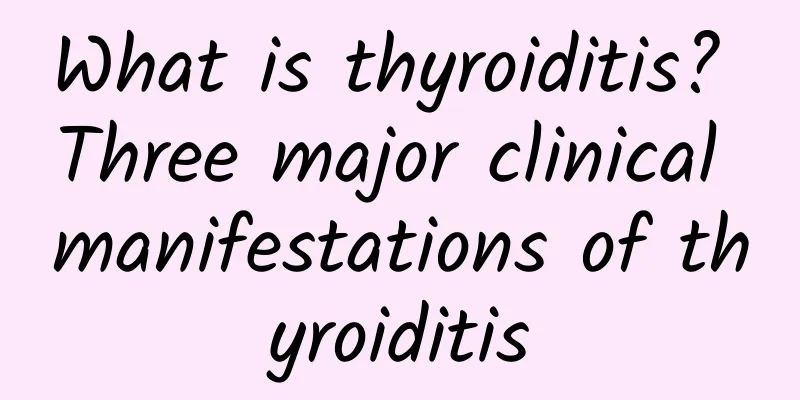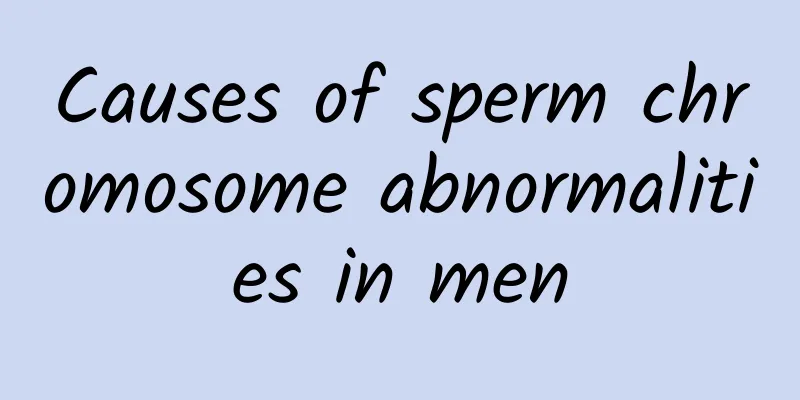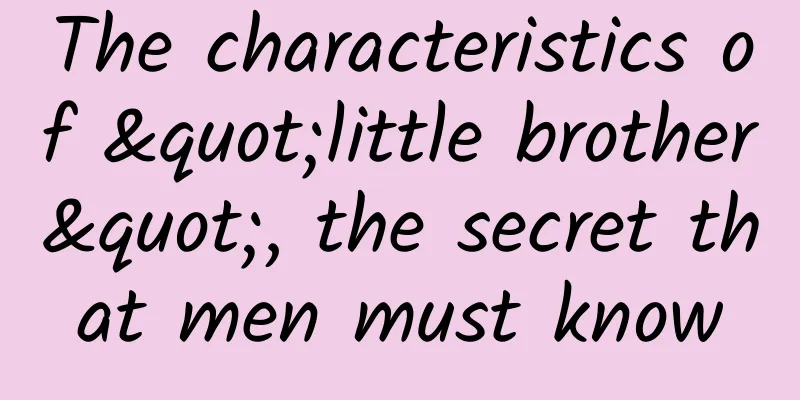What is thyroiditis? Three major clinical manifestations of thyroiditis

|
Nowadays, thyroid disease has become a common disease that endangers human health, and thyroiditis is one of the types with the highest incidence. So, what is thyroiditis and what are the symptoms of thyroiditis? What is thyroiditis? Thyroiditis is a common thyroid disease with various clinical manifestations. The same type of thyroiditis can manifest not only as hyperthyroidism, but also as hypothyroidism, diffuse thyroid disease, and thyroid nodules at different stages of the disease. Sometimes different types of thyroiditis can transform into each other. Therefore, thyroiditis involves all aspects of thyroid diseases and needs to be differentiated from many thyroid diseases. It is of great significance to understand the various types and clinical characteristics of thyroiditis. Clinical manifestations of thyroiditis: 1. Hashimoto's thyroiditis The onset is slow, and the thyroid gland is often enlarged, hard, and has clear boundaries. Some patients may have compression symptoms. There is often no special feeling in the early stage, and the thyroid function may be normal. A small number of patients may have transient hyperthyroidism in the early stage, and most cases have hypothyroidism when they are discovered. Patients often show symptoms such as fear of cold, edema, fatigue, dry skin, abdominal distension, constipation, irregular menstruation, and decreased libido. 2. Subacute thyroiditis The typical symptom is severe thyroid pain, which usually starts on one side of the thyroid gland and quickly radiates to other parts of the gland, the base of the ear, and the jaw. It is often accompanied by general discomfort, fatigue, muscle pain, and fever. The symptoms peak within 3 to 4 days after the onset of the disease and subside within 1 week. There are also many patients who have a slow onset, more than 1 to 2 weeks, and the condition fluctuates for 3 to 6 weeks. After improvement, there may be multiple relapses within a few months. The thyroid gland may increase in size by 2 to 3 times or even larger than normal, and there is obvious tenderness when touched. Within one week after the onset of the disease, about half of the patients will have symptoms of hyperthyroidism, such as excitement, heat intolerance, palpitations, tremors and sweating; these symptoms are caused by excessive release of thyroid hormone from the thyroid gland during acute inflammation. During the course of disease regression, a small number of patients may experience swelling, constipation, fear of cold, drowsiness and other symptoms of hypothyroidism, but these symptoms do not last long and eventually the thyroid function returns to normal. 3. Antithyroid The thyroid gland is enlarged to varying degrees and is painless. There is a self-limited period of hyperthyroidism of several weeks, followed by a temporary hypothyroidism due to depletion of thyroid hormone stores, and finally, usually, euthyroidism. The hyperthyroid period may be brief or missed. The condition is not diagnosed until women develop hypothyroidism, which is occasionally permanent. |
<<: How to treat thyroid nodules? Different types of treatment have better effects
>>: Are thyroid gland and hyperthyroidism the same? How to treat hyperthyroidism?
Recommend
What is the normal weight for boys?
What is the normal weight for boys? It depends on...
Beard, an indicator of men's sexual function
Core Tip: If someone suggests that you shave ofte...
What should boys eat to nourish their bodies?
Although life is developing very fast now, people...
What causes testicle and lower abdomen pain?
Male diseases are similar to female gynecological...
How can men improve their sexual performance?
At a certain time, everyone will meet their life ...
What medicine should my dad take during menopause?
The symptoms of female menopause are more promine...
What are the dangers of male vas deferens obstruction?
The vas deferens is the place where men transmit ...
What should men eat when they stay up late at night?
People who stay up late for a long time can be se...
Why does one side of the testicle hurt? Causes of testicular pain
Men's testicles are one of the most important...
Menstruation, ginkgo,
Women need to pay special attention to their diet...
How to make your penis erect, exercises to make your penis erect
Due to ageing and declining energy, many men find...
What causes itching in male pubic hair?
Pubic hair is only for men to decorate, it has no...
What to do if a man has less hair
We often see some people whose hairline grows bac...
Different dreams reveal your sexual desire
Spring dreams are something that both men and wom...
What should I do if the elderly have coronary heart disease?
Coronary atherosclerotic heart disease is a very ...









